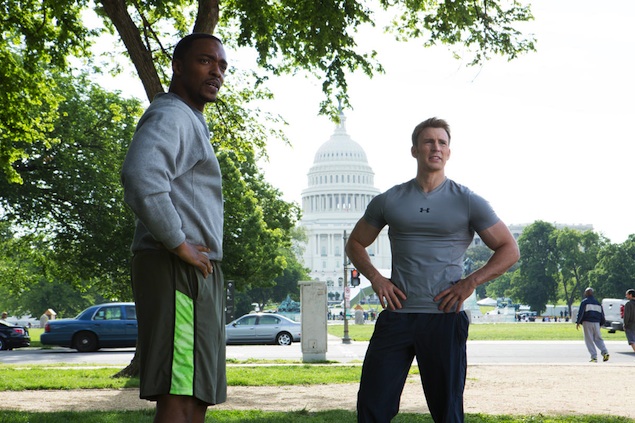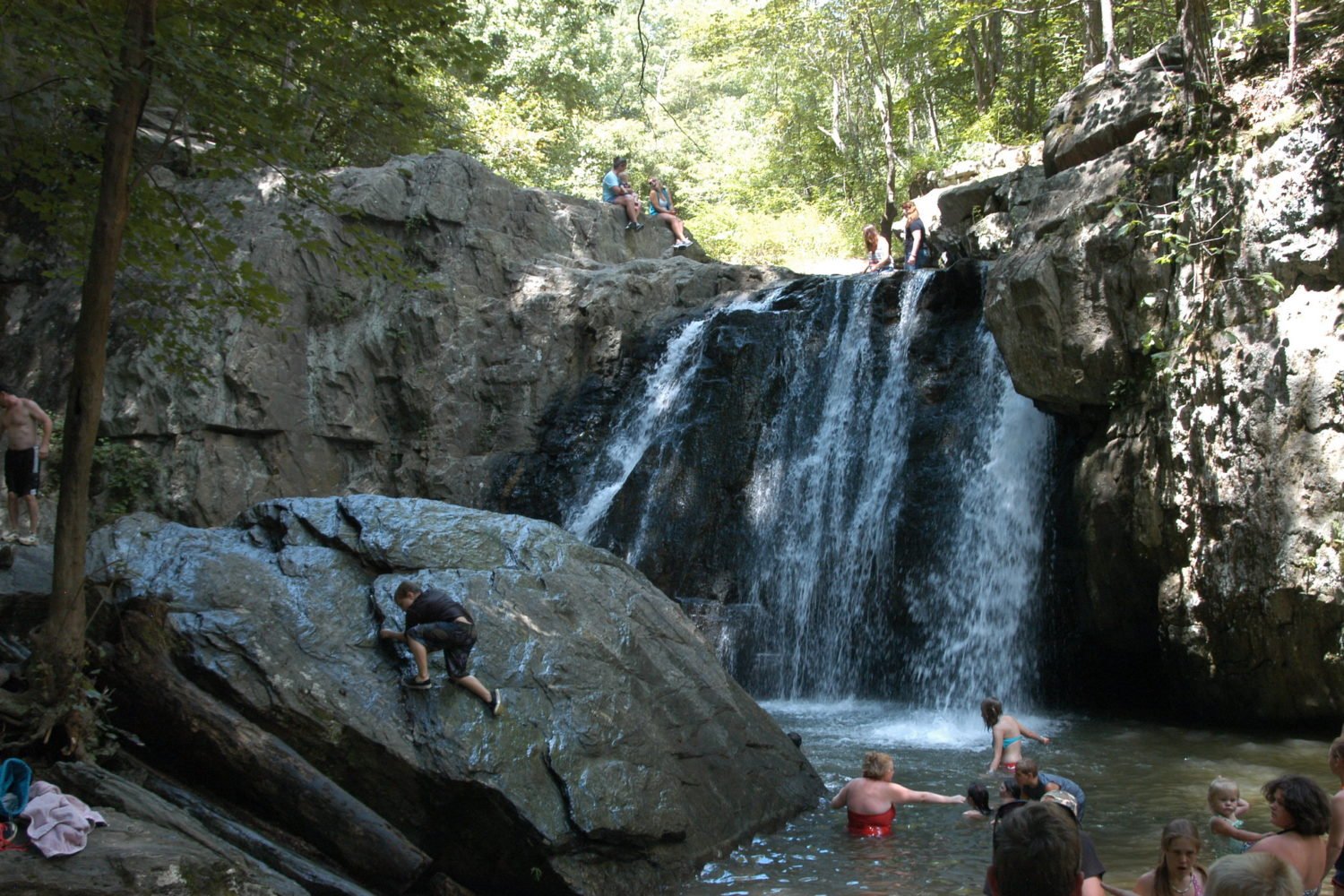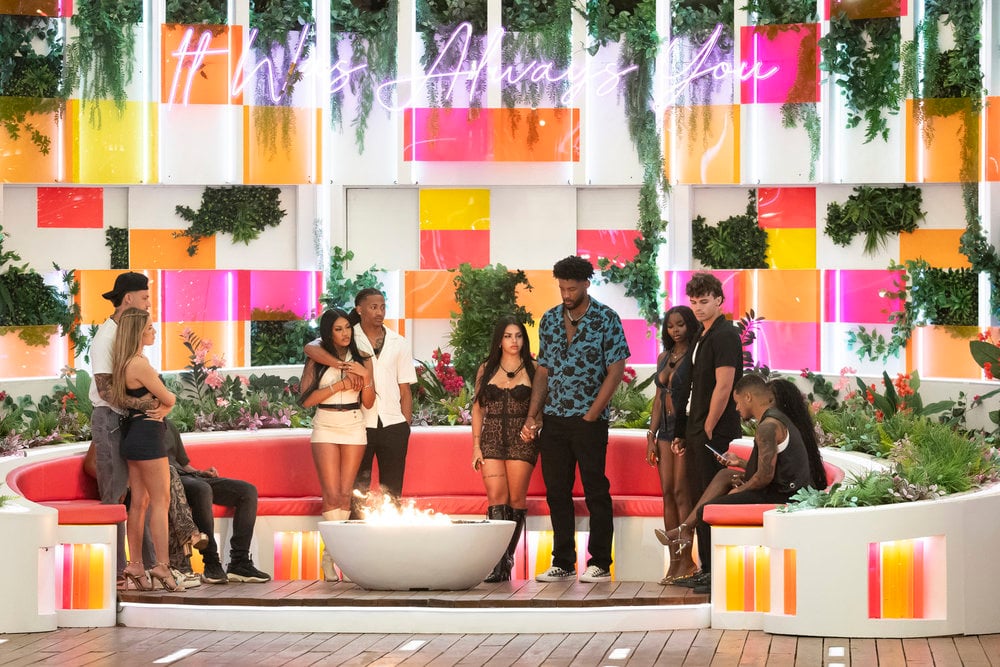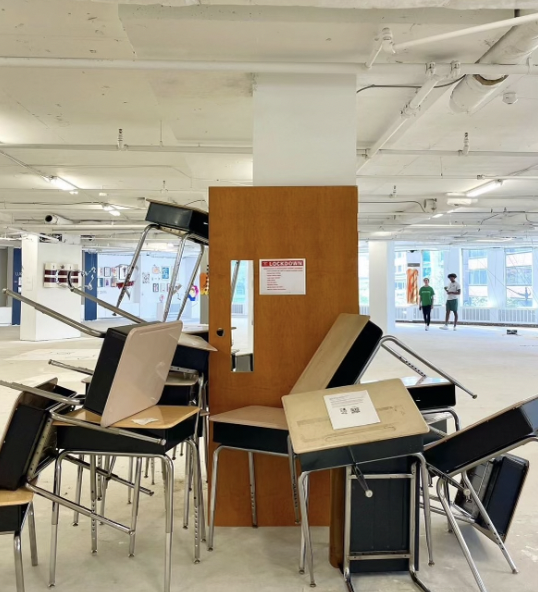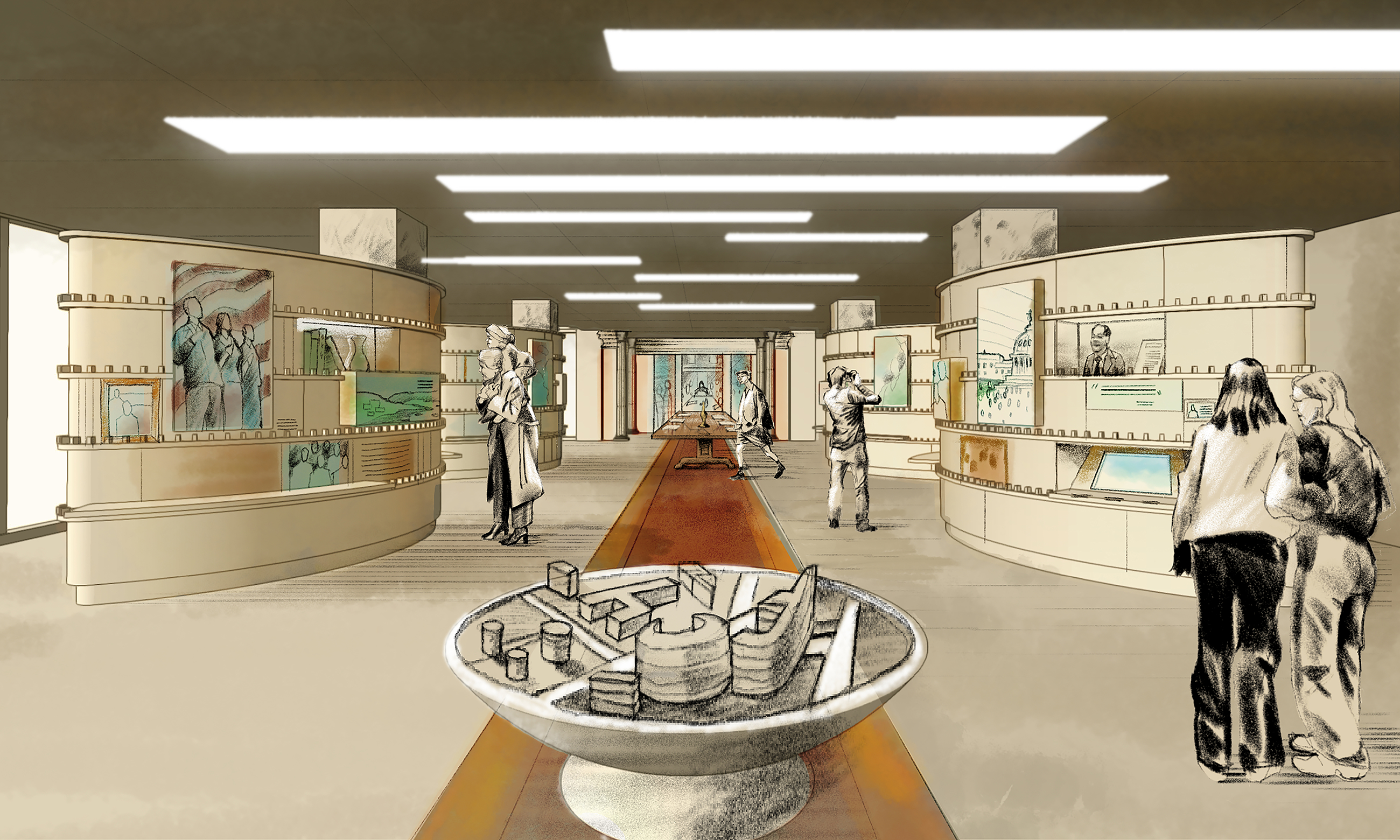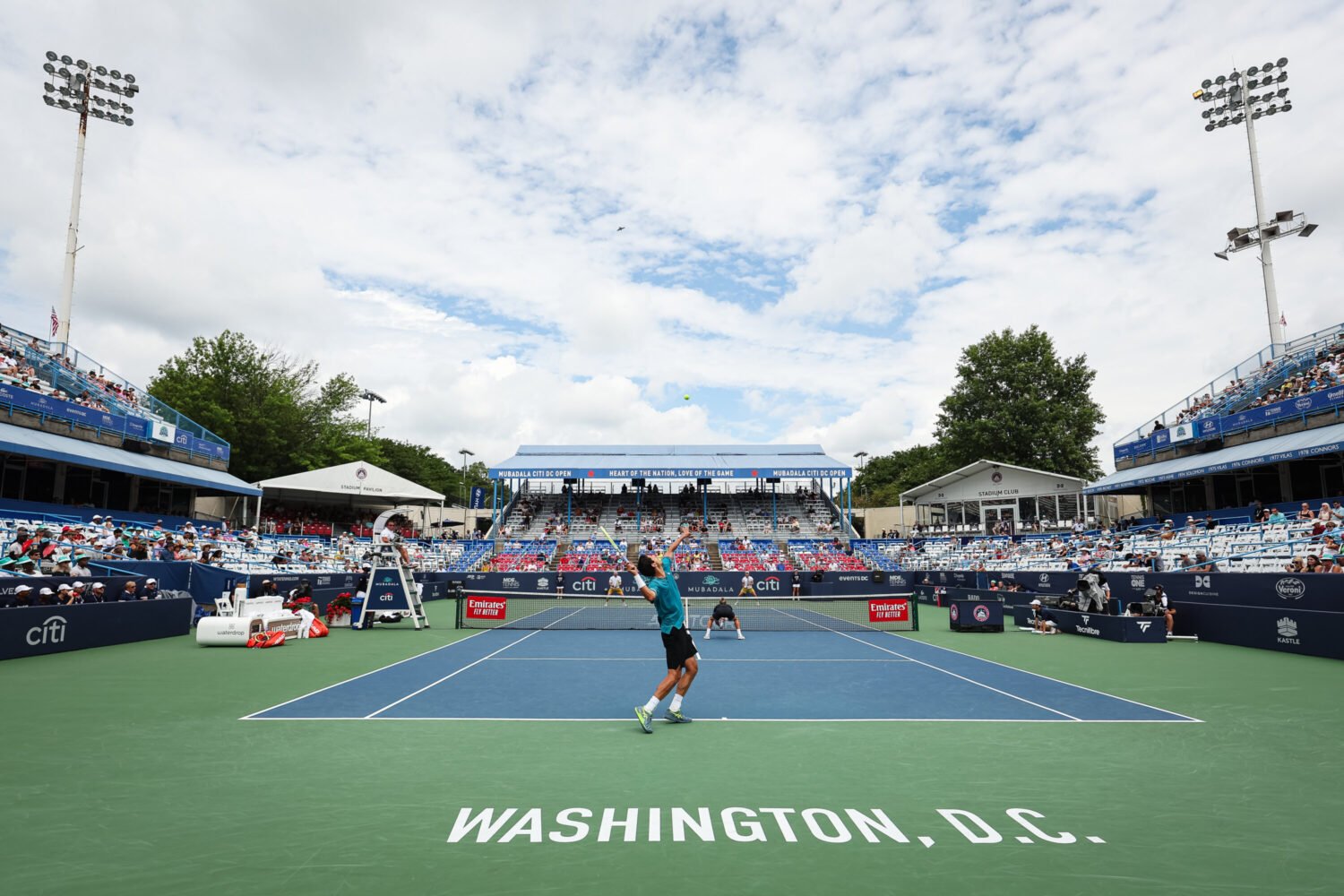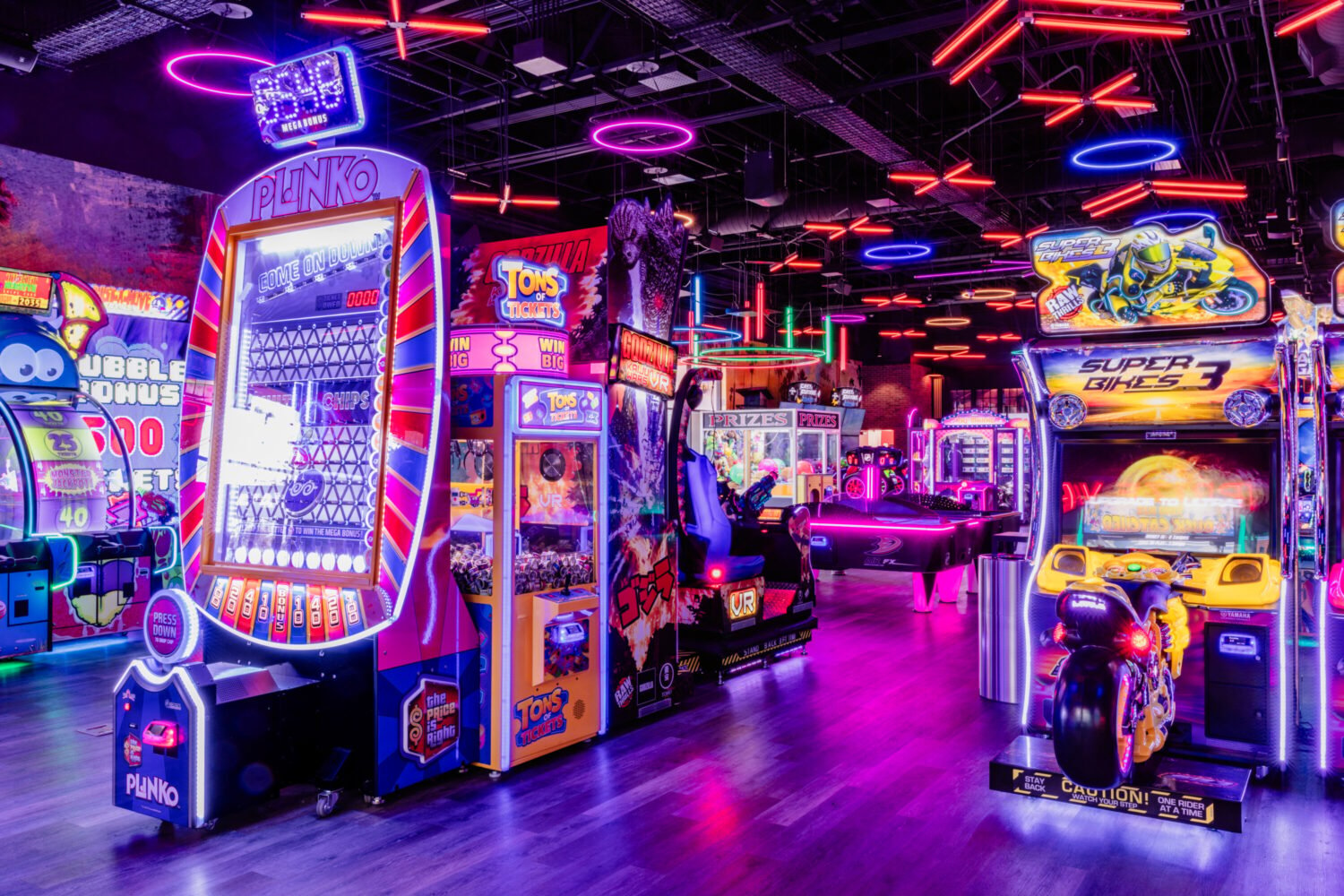Washington has something of a starring role in the latest comic-book blockbuster to hit the big screen, Captain America: The Winter Soldier. Most of the action takes place in the nation’s capital, where S.H.I.E.L.D. headquarters is located. Metro police officers engage in a shootout, Metrobuses turn up as collateral damage, and the Mall provides the backdrop for the film’s opening scene, in which Natasha Romanova (Scarlett Johansson) pulls up beside the cryogenically preserved super-soldier and quips, “Anyone know where I can find the Smithsonian? I’m looking for a fossil.”
Thanks in part to the challenges of shooting in DC—a maze of security regulations and no tax incentives—most of the exteriors in the movie were actually shot in Cleveland. But the real National Air and Space Museum appears in the film as the site of a Captain America exhibit: Steve Rogers (Chris Evans) checks out a gallery containing uniforms from his service during World War II. Though the exhibit was built elsewhere on a soundstage, the establishing shots of the Air and Space Museum were filmed on location last May—less than a minute of screentime that took months of planning. NASM communications director Claire Brown and pop-culture curator Margaret Weitekamp explain how the museum’s big-screen moment came together.
According to Brown, the process of coordinating the film shoot began in January 2013, when a location scout for Captain America sent a proposal to the museum’s communications office. Requests to film at the museum come in as much as six months in advance, she says. Staff members then review the proposal to determine whether the shoot is technically feasible and whether the project is consistent with the museum’s mission. NASM only considers films that are appropriate for family audiences, with MPAA ratings up to PG-13. (The last feature film to shoot in the space was 2009’s Night at the Museum: Battle of the Smithsonian. Before that, Transformers: Revenge of the Fallen filmed at the museum’s Udvar-Hazy Center in Virginia.) A curator checks the script for factual inaccuracies or concerns about the museum’s depiction, which can be grounds for denying a filming request. For Captain America, one of the year’s most highly anticipated films, NASM staffers were only permitted to see three pages of the script—the parts that involved the museum—and were required to sign confidentiality agreements. Once the museum signed off on the project, the filmmakers were cleared to shoot on May 16.
The film crew loaded some of their equipment into the space the night before and finished setting up on the afternoon of the 16th, a few hours before the museum closed at 5:30 PM. Parts of the central gallery, Milestones of Flight, closed early, while extras prepared in hair and makeup outside. A collections staffer and a curator were there to walk the film crew through the space, help them set up the shot, and—most important—make sure they didn’t bump into any artifacts.
The filmmakers wanted a shot that swooped across the entire gallery space, establishing that Steve Rogers was visiting the National Air and Space Museum. A camera, mounted on a crane in the museum’s main concourse, would make an arc from the Spirit of St. Louis to the center of the space. Weitekamp was with the camera operator the whole time to keep an eye on where the crane was swinging. “They were very cautious,” she says. “They made a point of saying [that] the camera itself is tremendously expensive, so they were equally invested in not banging it into anything.”
The scene was set during the day, so the crew had only a few hours of sunlight to get the shot. Once it was set up, Weitekamp recalls, “they were able to do the same arc over and over and over as they reset the extras to get different flavors of the shot that they wanted.” After less than three hours of filming, the crew wrapped around 8 PM and packed up for the next shoot of the night, in Dupont Circle. All told, the Smithsonian shoot took ten hours to produce a couple seconds of film.
Weitekamp didn’t get to meet any of the stars of the movie, but she did get a sneak peek at the fake Captain America exhibit. It contained approximately 35 objects, mostly memorabilia of Captain America’s World War II unit, and covered 12,000 square feet—more than double the size of NASM’s largest gallery. “The designer had the luxury of not being constrained by any of our physical space,” says Weitekamp.
Though the museum has curated pop-culture exhibits in the past, Weitekamp says it has no plans to produce any tie-in programs with the Avengers series. “Our focus is on spaceflight, and this is a very earthbound film,” she says.

